Glitchhikers combines lost highway drives, airport parkour, and other oddities
Eyes wide shut.
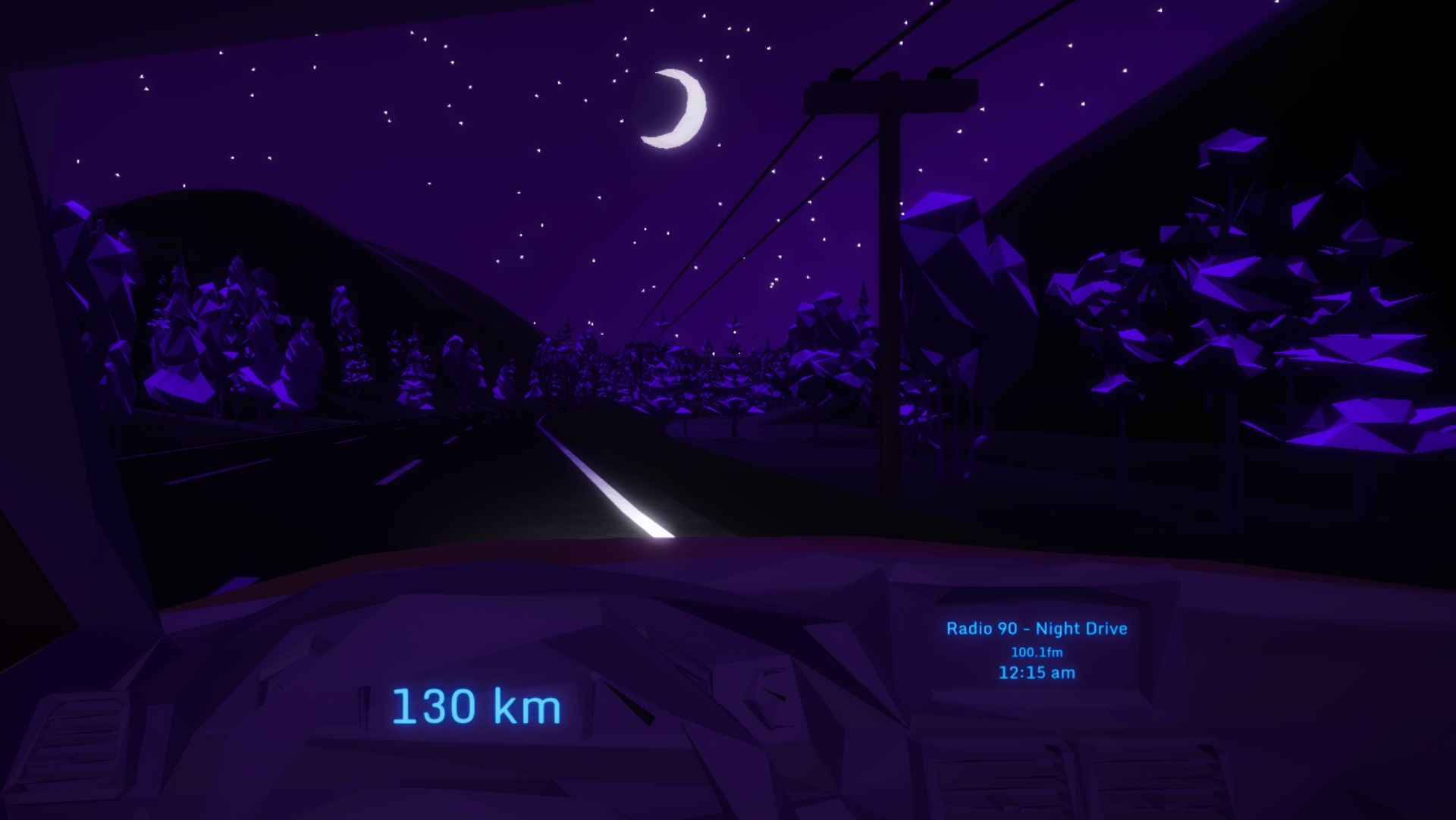
According to The Body: A Guide for Occupants by Bill Bryson, we blink 14,000 times a day, which means while we're awake our eyes are closed for a full 23 minutes, every day. That's enough time to squeeze in an episode of Seinfeld, if only we could eradicate blinking. We can't, because without it our eyes would dry out, yet I've only seen a handful of first-person games bother to simulate blinking. Glitchhikers is one of them.
Glitchhikers isn't a game about keen observation or the passage of time like other games with blinking, however. The original version, first released in 2014 and retroactively subtitled First Drive, was about driving along a highway listening to chill tunes while talking to strange hitchhikers. The slow blinks were part of its late-night vibe.
You'd turn to look at someone standing by the side of the road as you passed, swivel back to keep an eye on where you were going, and blink. When you opened your eyes the person you passed would suddenly be beside you, chatting away as if the conversation already started. How much did you miss in that blink? It added to a dreamy, somnambulant atmosphere that's been recaptured and expanded by Silverstring Media in Glitchhikers: The Spaces Between, which makes driving down a lost highway just one of several late-night journeys you can experience.
"When we were pitching the original, we pitched, 'You know that feeling of driving late at night on a highway alone?'" studio director Lucas Johnson says. "Most people are like, 'Yeah, absolutely.' And some people are like, 'No, I don't drive'. We're like, 'Oh, right. Of course, not everyone has that exact experience.' We knew that we could take it further."
The new game contains a version of that original drive plus three more journeys: a train trip, a walk in the woods, and a layover at an airport terminal. "Each mode has a different way of controlling it," says creative director Clariss Cyarron, "and a different way of moving through it and interacting with the world, which is something that we definitely have at several points made notes [about], 'OK, it looks like we're making four different games. Is that right? Is that right? Everyone? OK, cool. Yes, we are making four different games.'"
During the driving section you control the car's speed and which lane it's in, while in the walking section you choose which path to follow, and aboard the train you walk between carriages, choosing places to sit so you can look out the window or chat with an interesting passenger. The airport section? That's parkour.

Clarris explains the reasoning behind this unusual choice. "One of the more experimental things that we decided to do with the game, and also I think one of the more fun design challenges, is asking ourselves, 'How do people move through and relate in an earnest and genuine way in digital spaces?' The truth is that in my experience, people don't often walk through calmly and 'ooh' and 'ah' at the physical space, they run like a complete mad person parkouring off of the surfaces, because there's this way in which, when you slam your digital body against something and it pushes back on you, you're feeling the world."
Keep up to date with the most important stories and the best deals, as picked by the PC Gamer team.
That certainly rings true to my experience. I begin every new game trying to earnestly roleplay moving naturally through its environments, then get bored and end up sprinting and hopping through them like a frog on norepinephrine.
The first time you traverse the airport in Glitchhikers you're guided, but after that you're given the freedom to basically fly through it. "It's more like a really chill Tony Hawk Pro Skater," Clariss sums it up, "where you're jumping and parkouring on all the surfaces. You're making note of the strangely sculpted roofs that have greater than 45-degree angles, because those become slides when you step on them, versus ones that are less sloped. All of a sudden games give you a bunch of different ways of actually going, what is this architecture? What does this get me, what is the shape truly? Instead of it being something that you just approach and walk around 360 and look at, we wanted to give players the ability to be a bit more frenetic."
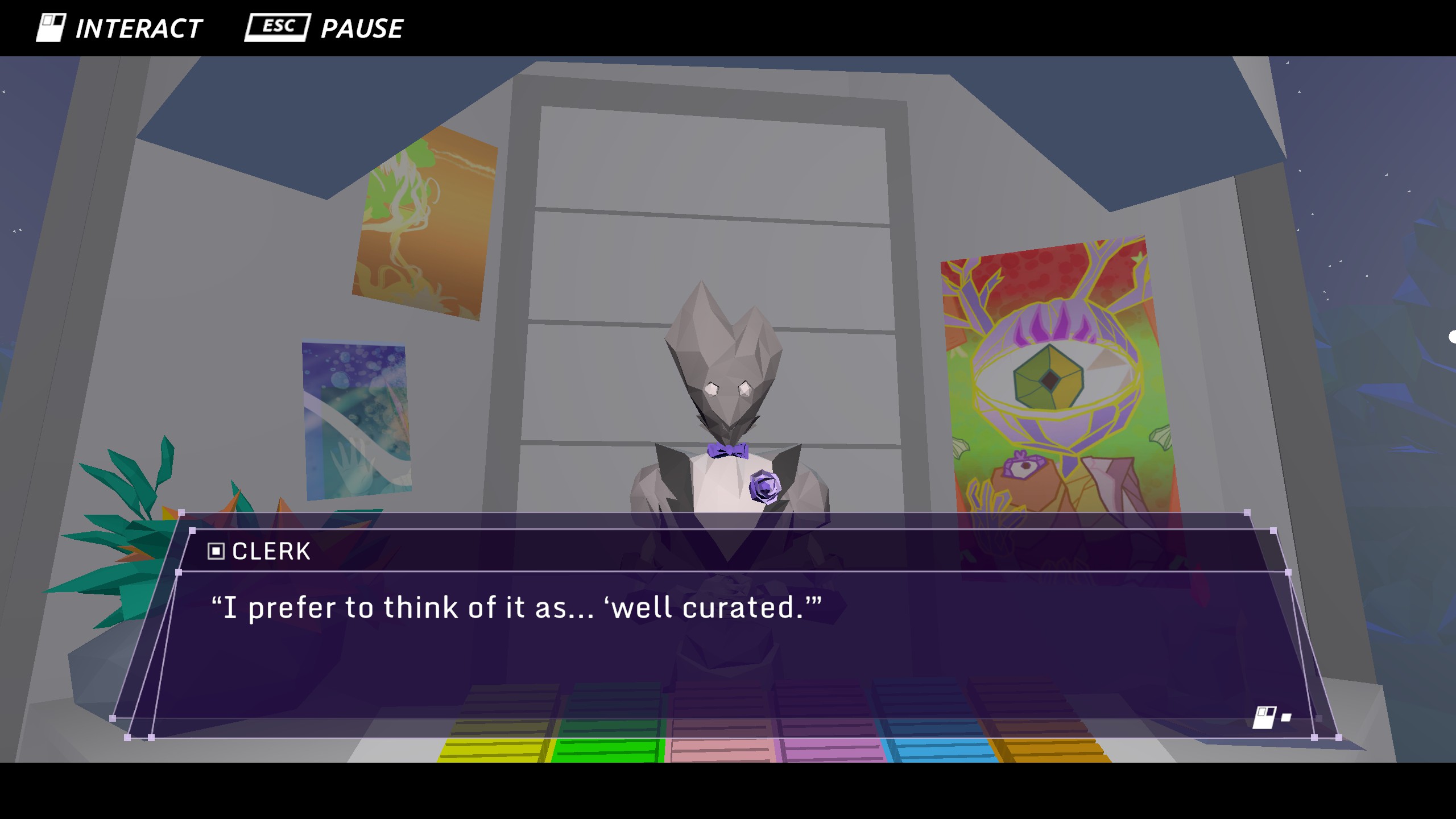
"One of the things that we really wanted to do with these different types of journeys was lean into what makes those journeys different," Lucas says. "You can't just take the experience of the highway drive and put it into the train and have it be the exact same, because a long train journey is not the same thing as a long drive on the highway. It's a very different kind of feel. We wanted to design each journey to be good at what that journey is about."
In the case of the airport terminal, it's about the time when you're not journeying. They considered making a plane section that would map more directly to the car and train sections, but having to wait in an airport feels more true to the mundane reality of flying. It's inspired by real experiences—in particular, Clariss says, her experiences of LAX. "Looking out on this big bay window at all the plebes who are still in the security line, it's like, I see you, lost souls. Then turning around and seeing all these strangely warped mannequins trying to sell me like Arme, Versace, at a markup. And it's just like, what sort of strange, twisted soul dimension have I found myself in? Oh, it's just LA."
The journeys are also differentiated by their music, and by the voice that accompanies you. The drive has a radio DJ who helps fill the gaps between hikers, and the developers wanted something similar for the other journeys. The train has a conductor and the airport has TV screens on the walls, but the walk presented more of a challenge.
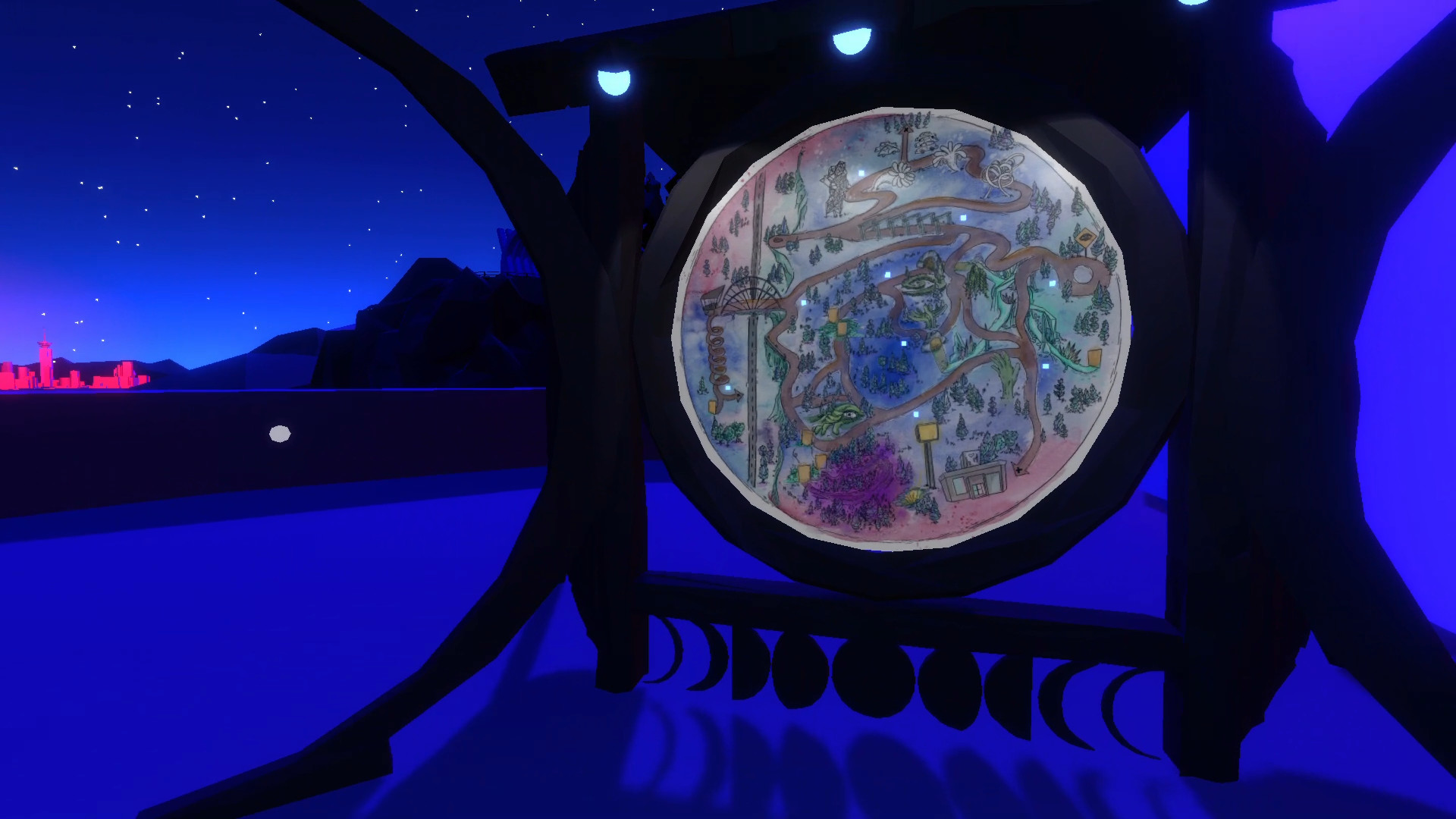
"What's the voice that you're going to hear while you're out in the middle of the forest?" Lucas asks. "It's a podcast. On your little 'glitch pod' you can listen to the podcast talking to you, and the kinds of subjects that we're talking about in the podcast are looking at the sublime or nature and things like that, while you're, of course, surrounded by nature. We have one about the colour blue. 'Look at the sky, and think about the colour blue.' How the ancient Greeks didn't have a word for blue, and light gets into that, and you're in this setting where you can literally look up at the sky when she tells you to, like, 'Oh, yeah, wow, that's gorgeous.'"
As well as adding more journeys with their own audio and their own control schemes, The Spaces Between substantially increases the number of hikers you can meet and the number of conversations you can have with them. The First Drive let you have three dialogues drawn from its pool of six potential characters, while the new game has 50 conversations with hikers who can recur in different areas. Several of them are full of facts, little nuggets of knowledge like Lucas's mention of the Greeks not having a word for blue, or the thing about how we blink 14,000 times a day I opened this story with. During my train ride, I met someone with moon-like hair who explained the origins of the myth that Vikings wore horned helmets.
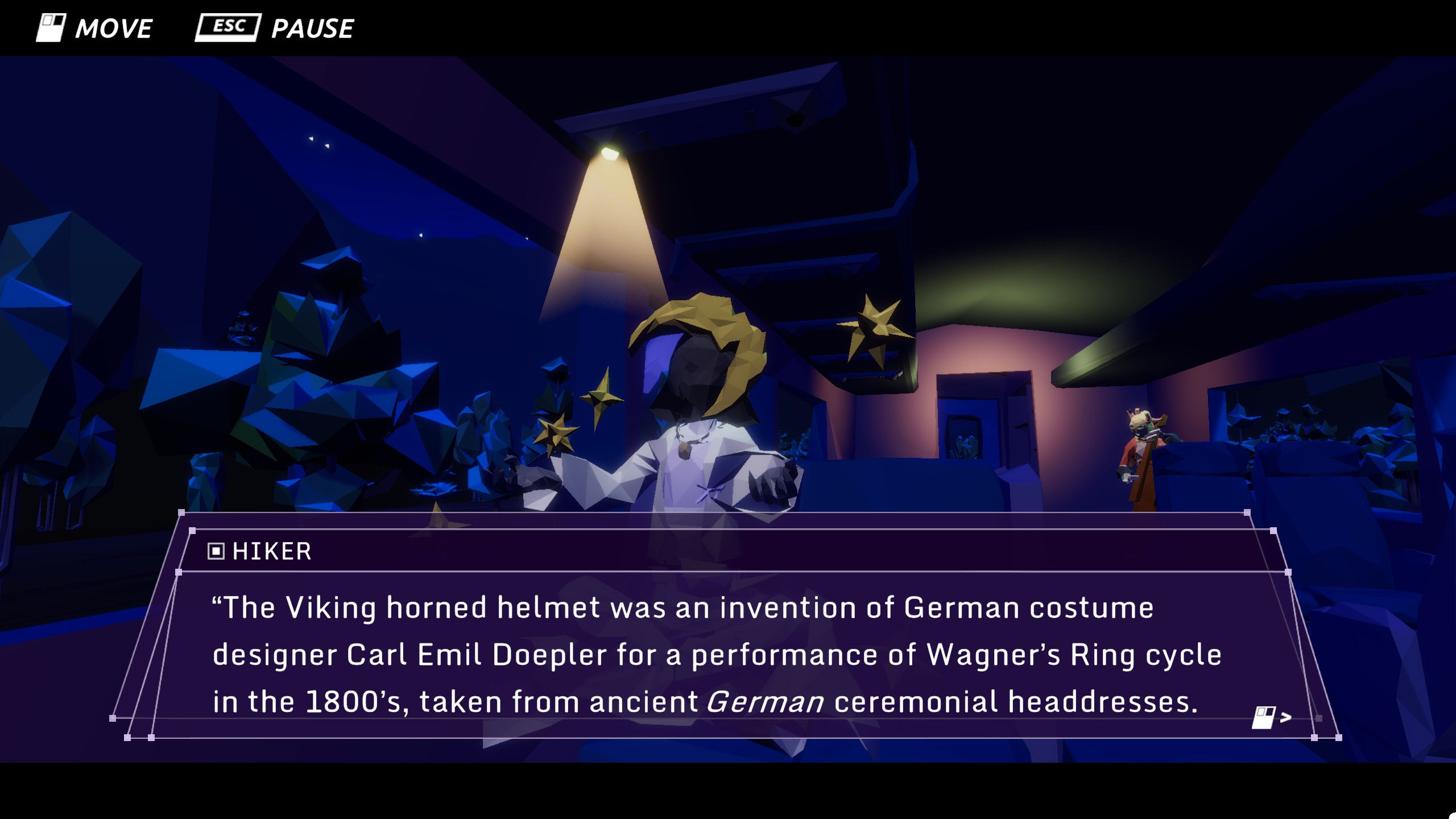
The conversations also dive into each character's philosophy and history, telling anecdotes you start to find—or maybe just imagine—connections between. I met a woman who, as a child, made up a saga about alien worlds among the stars. Then I met someone who claimed to be an alien, and could perhaps have come from one of those worlds. "Our hope is that those conversations give the player space to consider those things," says Lucas, "to have a moment to themselves. A moment of respite to some extent, from the world and from the kinds of games that are constantly demanding your attention, like 'Don't leave, you need to get another 500 points!'"
If you were to pick up a hitchhiker—against all the advice of people who host podcasts about murders—or to strike up a conversation in an airport or on a train, you'd probably find yourself talking to someone you'd otherwise never meet. That's what happens in the transitional spaces Glitchhikers is about, the ordinary environments that stop seeming ordinary at night.
"Each of those conversations is really just asking the player to sit and think about some big question," Lucas says, "or some small question about their life or about themselves or about the world. And how do we interact with the world? And how do we interact with this space? Both this space," he gestures first at the room he's in, then at the computer screen in front of him, "and this space? All of them have different perspectives on that."
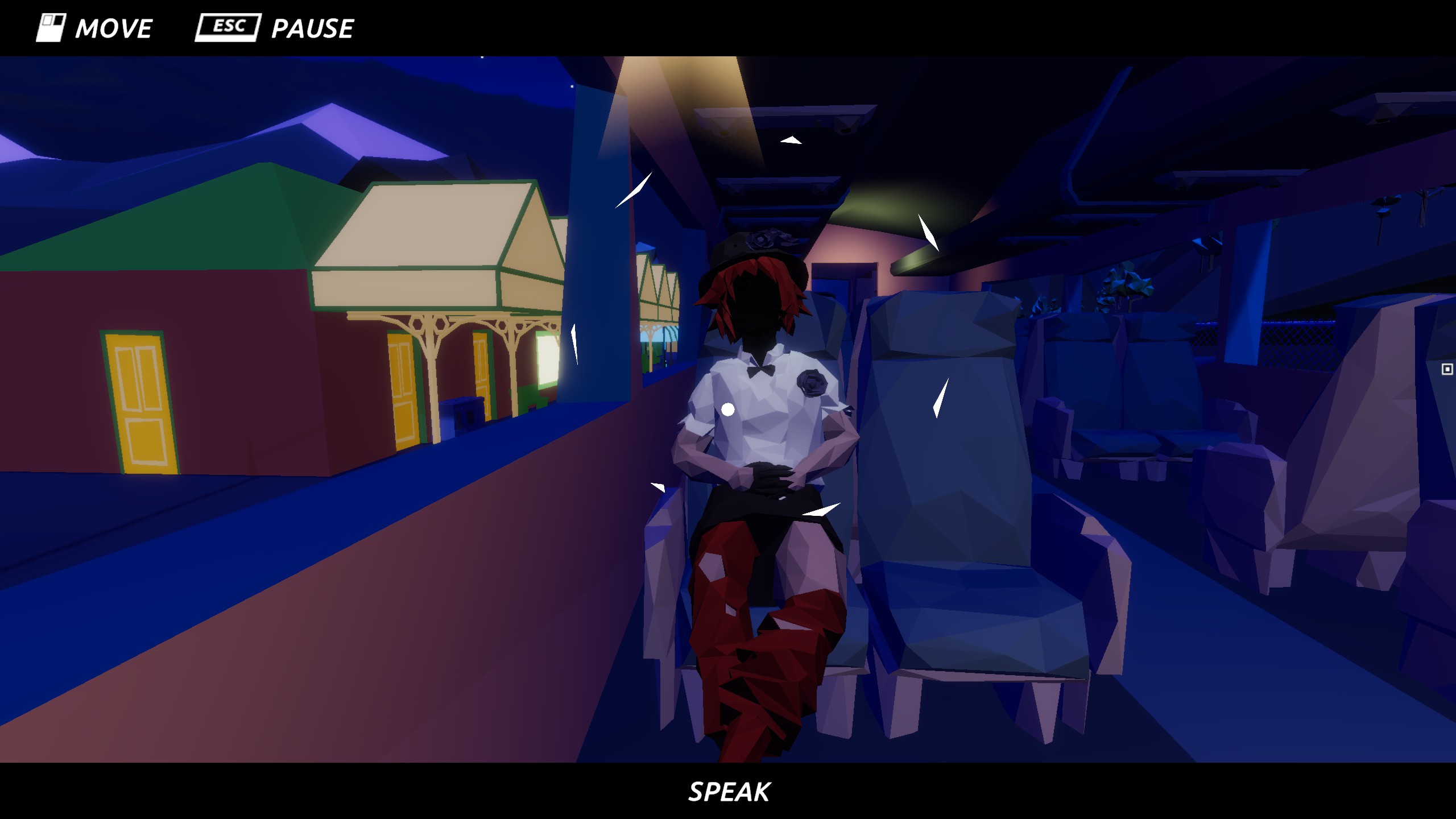
There's nothing so empty as a public space designed to be full of people when those people aren't in it. Whether it's a swimming pool, school, hospital, airport in the red-eye hours, or a highway where the red lights of distant cars never get closer. When it's quiet and dark they feel emptier than any other kind of empty space. Those moments are the perfect time to connect with someone else, maybe someone who lives in those lonely, liminal spaces, who you'd normally never notice. In the dark, you open your eyes and there they are.
Glitchhikers: The Spaces Between will be available from March 31 on Steam, itch.io, GOG, and the Epic Games Store.

Jody's first computer was a Commodore 64, so he remembers having to use a code wheel to play Pool of Radiance. A former music journalist who interviewed everyone from Giorgio Moroder to Trent Reznor, Jody also co-hosted Australia's first radio show about videogames, Zed Games. He's written for Rock Paper Shotgun, The Big Issue, GamesRadar, Zam, Glixel, Five Out of Ten Magazine, and Playboy.com, whose cheques with the bunny logo made for fun conversations at the bank. Jody's first article for PC Gamer was about the audio of Alien Isolation, published in 2015, and since then he's written about why Silent Hill belongs on PC, why Recettear: An Item Shop's Tale is the best fantasy shopkeeper tycoon game, and how weird Lost Ark can get. Jody edited PC Gamer Indie from 2017 to 2018, and he eventually lived up to his promise to play every Warhammer videogame.

